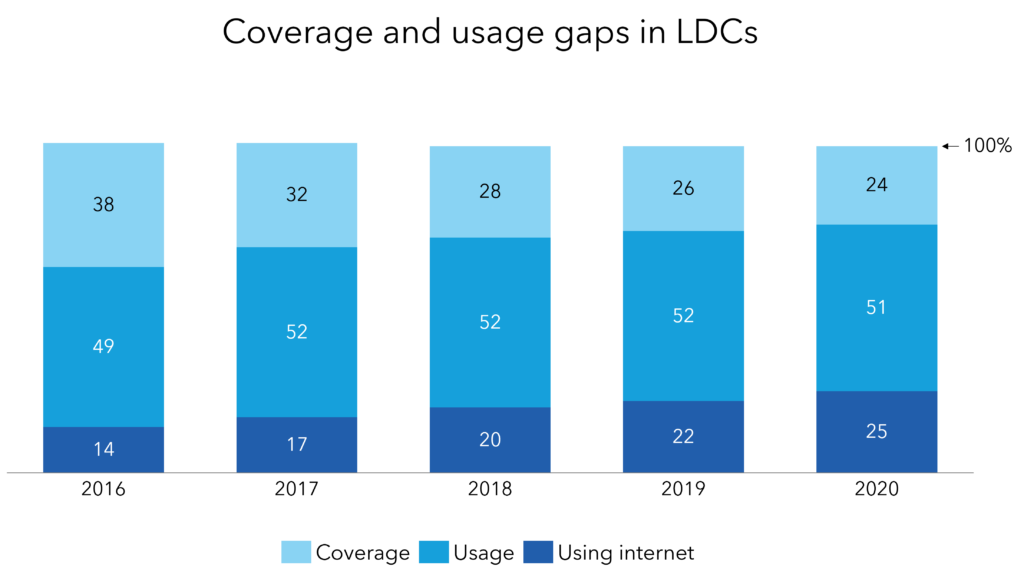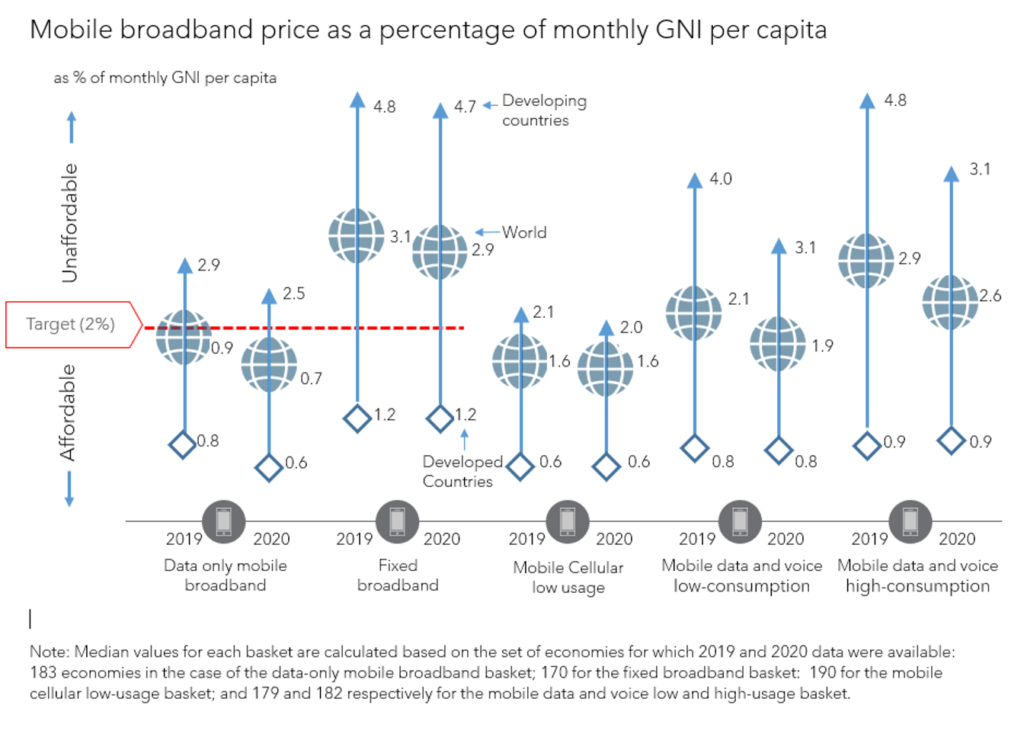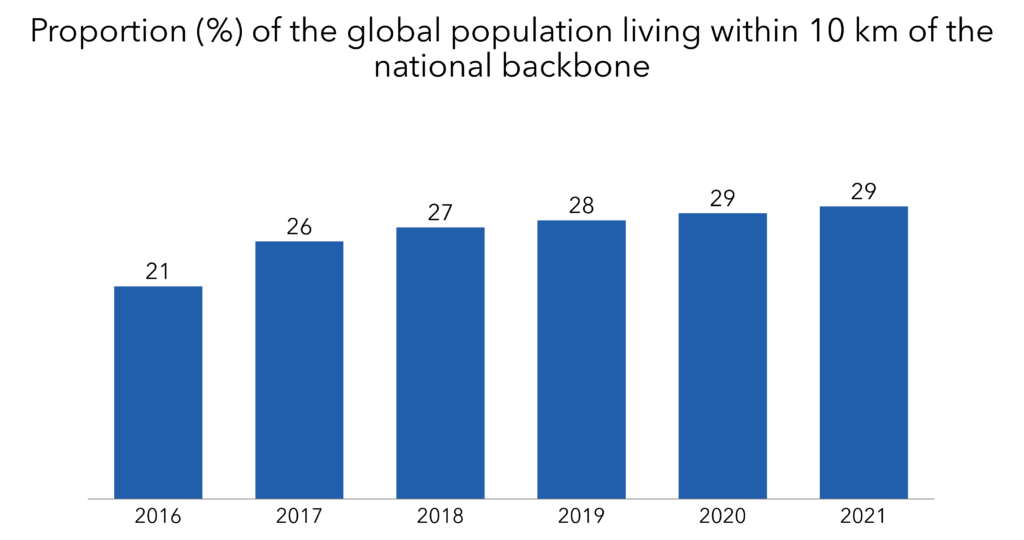Although the numbers of people able to go online globally appear to have increased, when it comes to ICT access and usage of the Internet, digital poverty continues to be significant.
Coverage and usage
Approximately 37% of the global population still remain offline[2] (i.e., people who are not using ICT services, such as data and voice, not using the Internet or not able to use the transformative power of ICT). One of the key challenges to overcome is the wide gap in coverage (i.e., the geographical area covered by a network of service provider; within this area, the phone will be able to complete a call using the carrier’s network or partner network[3]) and usage of ICTs to access online services. About 15% of the population across developing countries still remain unconnected by a 4G network which is essential for a reasonable mobile broadband connectivity[4].

As of 2020, in LDCs the coverage gap has been improving but 24 per cent of their population still remains uncovered. And for regions with coverage, the usage gap still remains close to 51 per cent. One of the biggest factors in this is affordability.

Affordability
In terms of measuring mobile broadband price as a percentage of monthly gross national income (GNI) per capita, the LDCs are lagging far behind (see Figure 3). ITU estimates that the actual pricing in LDCs is at 6.8 per cent of GNI (unweighted average), which is 4.8 points higher than the global affordability target of 2 per cent of GNI per capita.[7]

Backbone infrastructure
Backbone fibre infrastructure is a key resource for increasing the penetration of broadband networks (mobile and fixed). A measure of the infrastructure deployment is the distance people live from the backbone. The farther away, the poorer the quality and connectivity. In LDCs, less than one-third of the population lives within 10 km of a national backbone, and this has been the case since 2016 (see Figure 4).

Footnotes
[2] ITU. (2021). Measuring digital development: facts and Figures 2021.
[3] GSMArena. (2022). Network coverage – definition.
[4] ITU. (2021). Key ICT Indicators for Developed and Developing Countries, the World and Special Regions.
[5] ITU. (2021). Key ICT Indicators for Developed and Developing Countries, the World and Special Regions ITU Broadband Capacity Indicators.
[6]ITU. (2021). Connectivity in the Least Developed Countries: Status report 2021.
[7] Broadband Commission for Sustainable Development’s 2025 Targets: “Connecting the Other Half” (2018)
[8] ITU. (2020). Measuring digital development: ICT price trends.
[9] ITU. (2022) ITU Broadband Capacity Indicators.